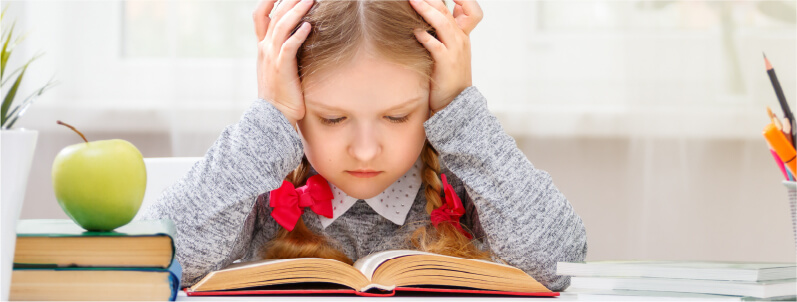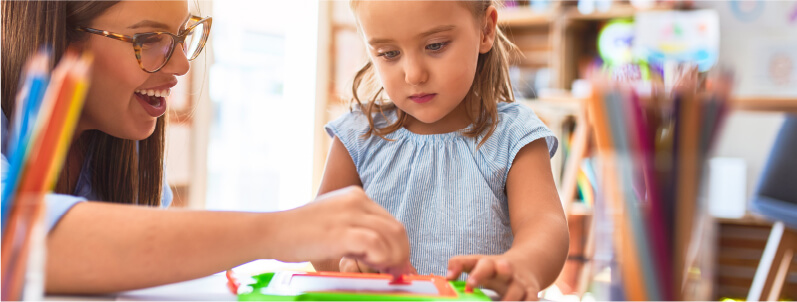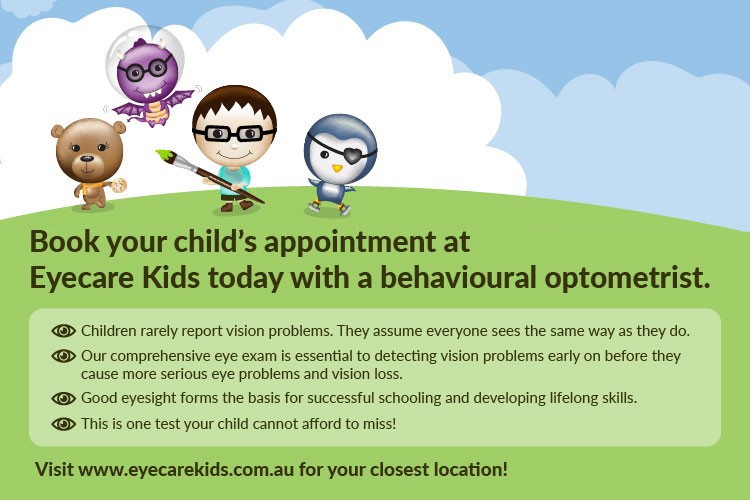Does your child take an excessive amount of time to complete their homework? Are they falling behind in their reading? You are not alone. The good news is that the solution could be staring you in the face. One in five children suffers from a vision problem; many of which are undiagnosed, jeopardising the education and future of thousands of Australian children.

Thanks to Eyecare Kids, children in the Sydney area will now have easier access to behavioural optometrists in six purpose-designed child-friendly locations. Eyecare Kids’ vision experts maintain a strong clinical focus on children’s vision, whilst preserving a holistic approach in the management of vision problems
Although Behavioural Optometrists and Vision Therapy has been available in Australia for more than 50 years, the professionals providing these services are not always easy to find. Eyecare Kids offers a professional optometry practice where therapy is a prominent part of the services provided. Visual Skills Vision Therapy is available for children with eye movement problems, lazy and turned eyes. Children with vision-related learning difficulties affecting their reading, can be treated with Development Vision Therapy; while corneal reshaping therapy (ortho-K) has been proven to be effective for children developing short-sightedness. Eyecare Kids services are available at associated practices, located in Hillsdale, Bankstown, Broadway, Chullora, Kareela and Roselands.
15% of primary school children have vision related learning difficulties, most of which can be addressed and treated by eyecare professionals. With 80% of learning taking place through the visual system, early diagnosis and treatment are crucial. From birth to when they start pre-school they are ‘learning to see’; from kindergarten to Year 2, most children are ‘learning to read’ and from Year 3 onwards they are ‘reading to learn’. But a relatively benign eye condition could jeopardise your child’s ability to learn and ultimately their future.

SooJin Nam, a Behavioural Optometrist for more than 15 years, is passionate about children’s vision. “Young children don’t know what good vision feels like, so they can’t tell you if something is wrong. I’ve had patients who see double when they look up or down and they thought that was normal until their first eye exam. I’ve seen first-hand how vision can hold them back at school and affect their learning ability and ultimately their self-confidence”, commented SooJin. “Working with kids is very different from testing and treating adults which is why we have designed our practices around their needs. To get the best results, children need to be relaxed so we have devised a system to create a fun experience for children from two years old.”
The number of children suffering from ADHD and dyslexia seems to be increasing but in some children, symptoms could be due to an undiagnosed vision problem such as convergence insufficiency or accommodation insufficiency – conditions that are easy to manage and treat. An eye exam at an Eyecare Kids practice can diagnose these and other problems and avoid years of heartache.
The Optometry Association Australia recommends that every child has a comprehensive eye check before they start school and regularly as they progress through primary and secondary school.
Each Eyecare Kids practice has been designed to offer a child-friendly environment with all the diagnostic equipment required to complete each consultation in a fun, interactive and educational way. They cater for children from two years old.
If glasses are required, Eyecare Kids stock quality brands like, Flexon, Nike, Hello Kitty, Miraflex, Tomato Kids, Adidas, Guess, Converse and Lacoste ensuring that every child leaves looking great.
Mention this article to be offered a FREE pair kids sunglasses from our selected range. While stock lasts.
Additional Facts
- 8% of 10-12 year olds are short-sighted. This increases to 17% by the time they are teenagers.
- 6% of children who are longsighted should be wearing glasses.
- 4-6% of children have eye turn (strabismus).
- 1-3% of children have a lazy eye (amblyopia)
- 8% of boys have a colour vision problem compared to girls, where only 0.4% are affected

